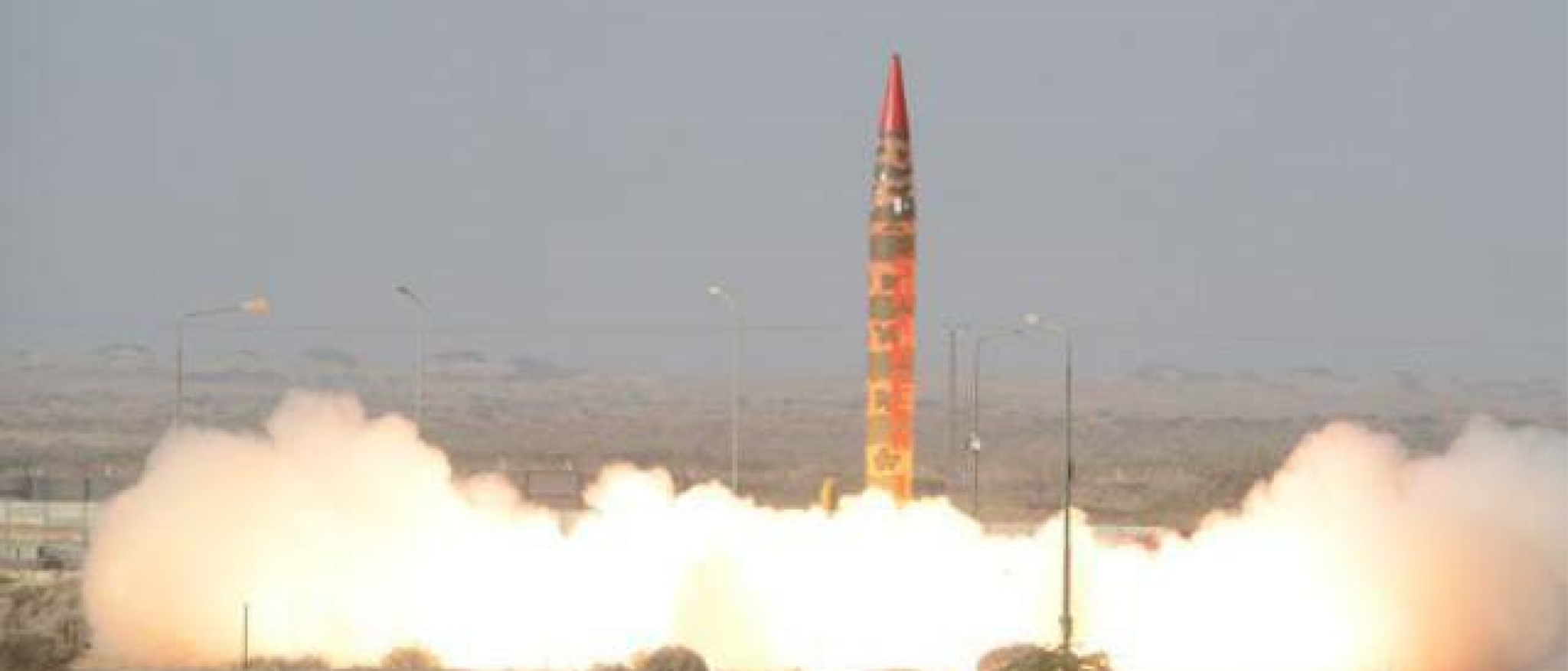“We plan on the adversary’s capabilities, not intentions.” Gen(R) Kyani.
To understand Pakistan’s missile program and its motives, one first needs to grasp the idea of deterrence. An effective defense is based upon factors like detect, deter, deny and defend.
The word deter means to scare off; hence deterrence would be anything that scares off the adversary, e.g., a weapon, technology, or diplomatic means.
Pakistan, unfortunately, has arch-rival many times bigger in size, resources and military might. In an all-out war, Pakistan would be at a significant disadvantage vs. India as it neither has large territory to trade for time nor the resources to fight a long brutal war. The wars of 1965 and 1971 both taught Pakistan some precious lessons. The deterrence then possessed was not enough to scare off an enemy three times larger in military might. Pakistan vowed never to let that happen again. Hence it started the quest for nuclear weapons. On 11 March 1983, PAEC did the first subcritical test of a nuclear device, proving Pakistan’s capability of making a successful atomic device.
The next step in the process was nuclear arsenal dispatch. For that purpose, we had aircraft like Mirages and later F16s. But during the 1980s, India started a program for a ballistic missile named Prithvi. Eventually, India also had aircraft for nuclear delivery, so the question was why to go for ballistic missiles that are far more expensive and complex.
Ballistic Missiles
Ballistic missiles are more survivable, can carry larger payloads to a greater distance, and sometimes can carry more than one warhead; they can use to target multiple cities. A ballistic missile follows a ballistic trajectory to aim at a predetermined target. Guided and powered only for a short duration of their flight, they were initially not very accurate but improved later on. The types of Ballistic missiles, depending upon their ranges, are
- Battlefield Range Ballistic Missile with range less than 300 Kms,
- Short Range Ballistic Missiles with ranges between 300 to 1000 kms,
- Medium Range Ballistic Missiles with ranges between 1000 to 3000 kms,
- Intermediate Range Ballistic missile with ranges between 3000 to 5,500 kms,
- Intercontinental Ballistic Missile with ranges more than 5,500 kms.
Intercepting a ballistic missile need tons of infrastructure ranging from satellite sensors, kinetic hit to kill interceptors carry out mid-course interception, ground or sea-based radar systems, effective command and control center, and interoperability among the assets mentioned above. Few countries possess this kind of capability, and even fewer can perform in real-time.
Dawn of Pakistan’s missile program
Pakistan’s missile program started in 1988 with PM Benazir Bhutto and General Mirza Aslam Baig as COAS. It was started as a response to the already existing Indian program of developing different kinds of missiles using knowledge gained from soviet technology. One of those missiles to be designed and produced was “Prithvi.” It was named after a Hindu raja; it was a short-range ballistic missile, first tested on 25th February 1988.
Pakistan started its program to develop short to medium-range ballistic missiles. Planning of the program began in 1987 under the supervision of Gen. Zia-Ul-Haq, based upon intelligence gathered about the Indian program.
Under this program, PAEC, KRL, SUPARCO, and DESTO were authorized to start designing and developing their designs separately for the first ballistic missile of Pakistan.
Among these institutions, SUPARCO was best qualified in rocket sciences as they had been working with rockets in cooperation with NASA to carry out atmospheric studies. Missiles of Pakistan were given the name “Hatf” and their individual names, such as Ghauri, Abdali, Ababeel, etc., in cooperation with NASA to carry out atmospheric studies.
During Benazir Bhutto’s era, the rapid design and deployment of missiles were emphasized to thwart the already present Indian missile threat. Joint SUPARCO and KRL project cooperation resulted in the production of the Hatf-1 missile.
Hatf-1
Class: BRBM
Mass: 1500 kg
Range: 100 km (upgraded hatf-1b version) Payload: 500 kg conventional/nuclear warhead In service: 1989-present
Manufacturer: SUPARCO and KRL.
Hatf-1 is Pakistan’s first BRBM. It is more likely to be used as an artillery shell to bombard an area. Cheap to produce and easy to maintain and transfer, Hatf-1 has a TEL (Transporter Erector Launcher) launch platform, making it highly mobile. It uses a solid propellant which means it can be launched on short notice, unlike liquid propelled missiles which need to be fueled before launch.

Many suspect French and Chinese assistance in building Hatf-1 as its design remarkably resembles the French missile Eridan sounding rocket.
Hatf-1 initially had poor accuracy and could land within several kilometers of the target, but later Hatf-1b possessed guidance systems making it land within several meters of the target. Pakistan states that it is a conventional missile, but theoretically, if mated with a miniaturized nuclear warhead, it can also be used as a nuclear-tipped missile.
Abdali (Hatf-2)
Class: SRBM Mass: 1750 Kg
Range 280-450 Km
Payload: 300-500 kg conventional/submunitions In service: 2005-present
Manufacturer: SUPARCO.
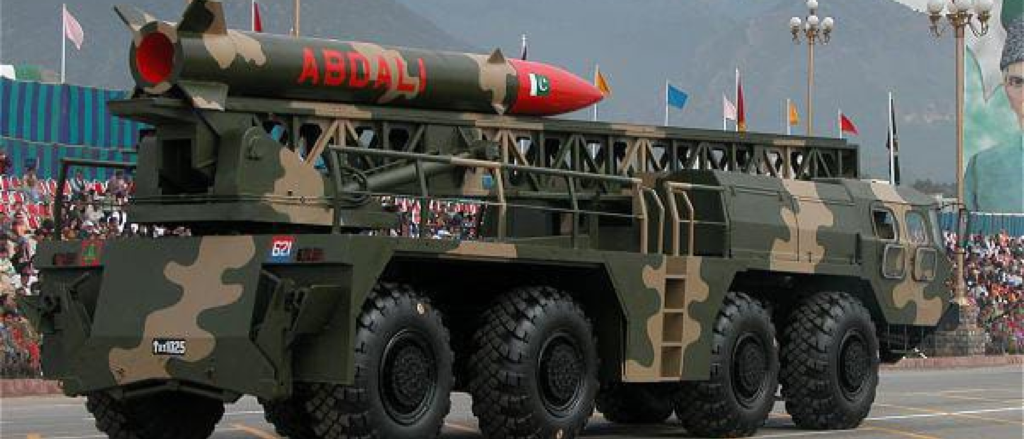
Hatf 2 was initially planned to be a two-stage Hatf-1 missile. A solid-propellant stage was considered for attachment with Hatf-1 for extending its range; SUPARCO, later on, rejected the idea due to lack of resources and designed a single-stage missile with the characteristics mentioned above and named it Abdali-1. Hatf-2 comes with a built-in guidance system, making it land within 100 to 150 meters of the intended target. Its large payload and accuracy make it ideal for targeting vital military installations and resources, whether they are enemy communication lines or supply lines. It has a TEL-based launch platform.
Ghaznavi (Hatf-3)
Class: SRBM Mass: 5,256
Range: 290 Km
Payload: 700 Kg
In service: 2004-present Manufacturer: NDC.
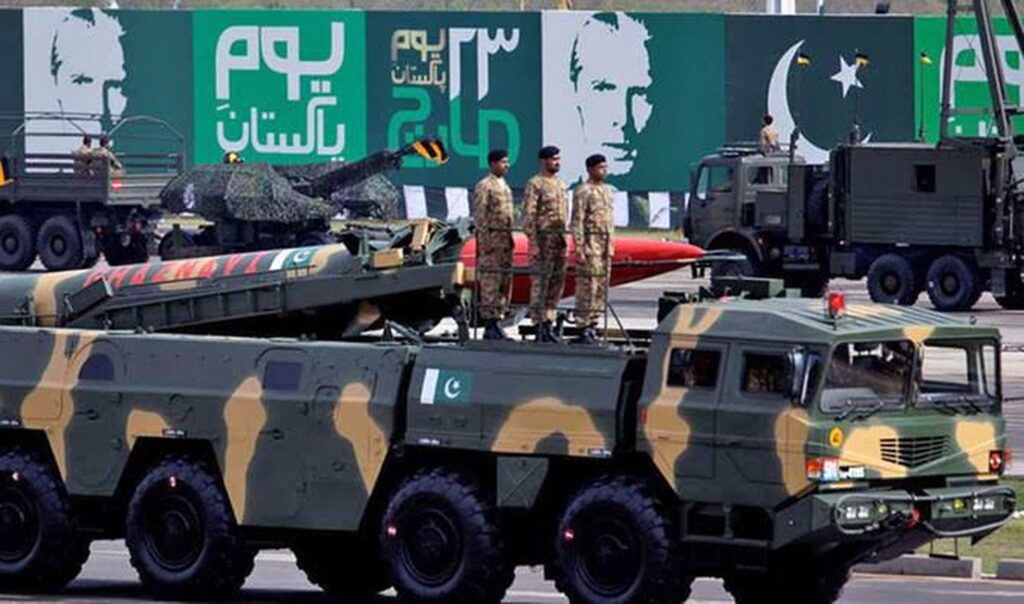
Hatf 3 is a short-range ballistic missile in use by Army Strategic Forces Command (ASFC). It has an inertial navigation system and can hit a target with 250 meters of CEP (Circular Error Probability). This missile closely resembles the Chinese DF11 missile. Pakistan initially tried to procure Chinese missiles off the shelf but abandoned the idea due to international limitations. Some still speculate that the Chinese sold this missile to Pakistan but officially, there is no confirmation to date.
Pakistan has successfully carried out many tests for training and validating weapon parameters.
Shaheen-1 (Hatf-4)
Class: SRBM
Mass: 10,000 Kg (Shaheen 1-A) Range: 1000 Km
Payload: 1000 Kg single conventional/nuclear warhead
In service: 2003-present Manufacturer: NDC and NESCOM.
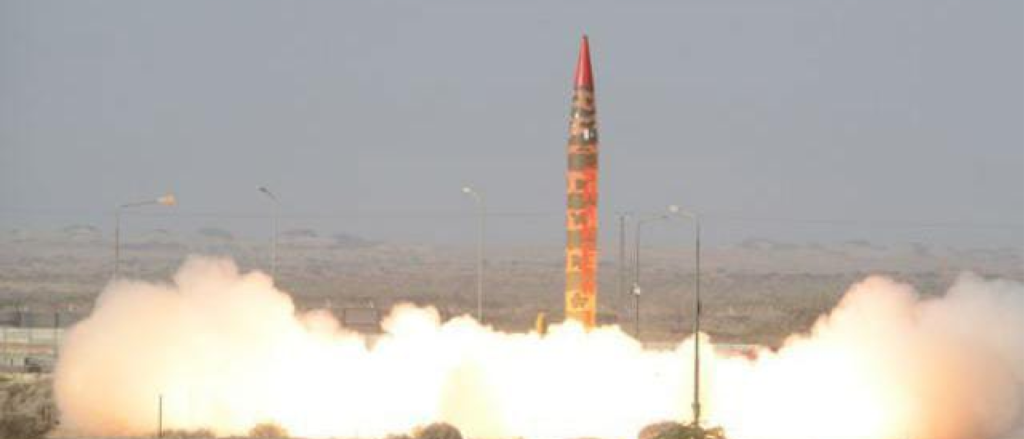
Shaheen 1 is a part of the Shaheen series of missiles (Shaheen 1, 2, 3) and boasts much more sophisticated features than missiles tested before. It features an excellent terminal guidance system. Its stealthy warhead design makes it difficult for Missile defense systems to intercept. The goal of the shaheen program was to develop a missile capable enough to defeat modern air defense systems. As the adversary’s capability grew in missile defense, so did the need for better missiles. Shaheen 1 features a Post Separation Altitude Correction system and thrusters to correct the warhead’s trajectory via satellite navigation, dramatically increasing its accuracy.
Developing Shaheen 1 was a challenging task. Still, it was accomplished thanks to the resilience and hard work of Pakistan’s scientists.
Ghauri (Hatf-5)
Class: MRBM Mass: 15,850 Kg
Range: 1500-2300 Km (Hatf 5-Hatf 5A) Payload: 700 Kg conventional/nuclear warhead In-Service: 2003-present
Manufacturer: KRL.
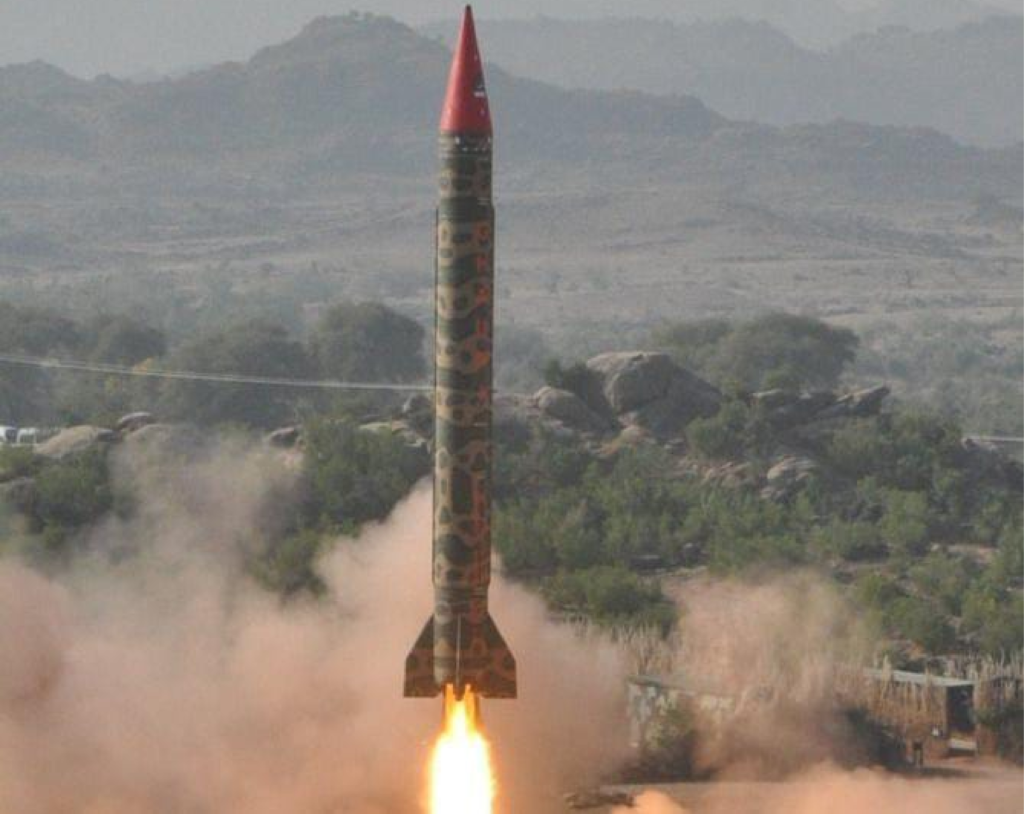
Gauri missile is made by KRL and is Pakistan’s only liquid-propelled missile program. Missile design is considered to be heavily influenced by the North Korean missile Rodong-1. The missile initially had a range of 1500 Km, which later extended to 2300 Km, making it capable of targeting most of the Indian territory with a 700 Kg warhead. Ghauri is guided by an INS (Inertial Navigation System) and has a CEP of 190 meters. The missile has to be refueled before launch, making it vulnerable to pre-emptive strikes, but it is cheaper than solid-fueled missiles. First tested in 1988 Ghauri missile was handed over to Pakistan Army in 2003
Shaheen-2 (Hatf-6)
Class: MRBM Mass: 25,000 Kg
Range: 2000 Km
Payload: 700 Kg conventional/nuclear warhead In Service: 2014
Manufacturer: NESCOM and NDC.

Shaheen 2 is a 2-stage solid propelled MRBM developed by NDC and NESCOM. First tested in 2004, Shaheen 2 has a TEL-based launch platform. It features Delta control fins at the rear fuselage and has side thrusters mounted at the re-entry vehicle to provide more accuracy before entering the atmosphere; the same thrusters can be used to carry out maneuvers to prevent interception as they would deny defense to calculate the accurate trajectory for interception. Hatf-6 has terminal guidance in the form of INS and has a CEP of 350meters. Re-entry vehicles are also speculated to feature GPS guidance that, if true, would increase missile accuracy up to a great extent.
Note: Hatf-7 and Hatf-8 are cruise missiles and will not be discussed in this article.
Hatf-9
Class: BRBM
Mass: 1200 Kg
Range: 90 Km
Payload: 400 Kg conventional/ tactical nuclear warhead In Service: 2013
Manufacturer: NDC.

Nasar is a BRBM believed to have been developed as a direct response to the Indian Cold Start Doctrine. Indian doctrine revolves around saturating Pakistani defenses by gathering many forces along the border and making shallow incursions in Pakistan’s territory. Under the assumption that by the time Pakistan counterattacks, it would have lost territory to Indian assault, UN and International intervention would come in place, thereby declaring India victorious.
Therefore, Nasr was developed to deliver the same deterrence at a shorter range than Shaheen-2, and Ghauri delivered at longer ranges. Nasr can be mated with a low-yield tactical nuclear warhead against Indian forces on Pakistani soil. It has a minimum blast effect and maximum ionizing radiation effect, making it more dangerous/damaging for the enemy. Nasr provides the ability to “Shoot and Scoot” and can defeat enemy air defenses. Although the actual CEP of Nasr has not been revealed, the test video shows it to be highly accurate.
Shaheen-3
(Hatf 10) Class: MRBM
Range: 2750 Km
Inservice: Speculated not to be operationally deployed right now Payload: Conventional /Nuclear.
Manufacturer: Nescom and SUPARCO.
Initially designed as a space booster for future SLV of Pakistan, Shaheen-3 currently has the most extended range among missiles in Pakistan’s arsenal. Shaheen-3 was first tested on 9 March 2015. It is a two-stage missile featuring solid propulsion and is road-mobile. This missile is capable of delivering a nuclear warhead up to 2750 Km. For the first time, Pakistan is now capable of striking the whole Indian mainland along with Nicobar and Andaman Islands, which resided outside of Pakistan’s missile envelope.
India was developing them as strategic bases. The idea behind this Shaheen-3 was to develop a missile, which would leave India with no safe havens and would deny India “the second-strike capability.” To reach the Nicobar Islands, these missiles are required to launch from very eastern parts of Pakistan. This missile can reach up to 18 times the speed of sound. They were making it extremely difficult to intercept.
Ababeel
Class: MRBM
Range: 2200 Km
Payload: Conventional/Nuclear MIRV warheads Manufacturer: KRL.
Ababeel is a three-stage, solid-propelled MRBM. This missile holds a unique place, at least for now, in Pakistan’s missile arsenal as it is the first Pakistani missile capable of delivering multiple warheads at different locations with accuracy over a distance of 2,200 Km. This missile was developed by KRL and was publicly tested on 24 January 2017. Ababeel is believed to be based upon the Shaheen-3 airframe. This missile was a breakthrough in Pakistan’s missile technology as by successfully testing this missile, Pakistan stood among very few nations that possessed MIRV (Multiple Independently Targetable Reentry Vehicle).
Today, Pakistani missiles cover all Indian territory. They can hit a target in even the middle east, so now Pakistan might emphasize improving the missile’s survivability rather than its range. Attaining MIRV technology can be a step towards it as MIRV vehicles can be an excellent challenge for BMD (Ballistic Missile Defense) systems. A BMD works by calculating missile/warhead trajectory and then releases an interceptor for a mid-course interception, but in the case of MIRV, it would be facing multiple warheads and decoys, traveling many times the speed of sound and targeting different places at once; hence it would be hard to defend against such missile.
Pakistan’s journey in the world of ballistic missiles might continue or end, but one thing’s for sure that the nation owes it to all those who soldiered on in the face of hardships, ridicule, fear, resource lessness and made us what we are today.
References
https://missilethreat.csis.org/missile/hatf-1/ https://en.wikipedia.org/wiki/Hatf-I https://www.nti.org/learn/countries/pakistan/delivery-systems/ https://www.sipri.org/sites/default/files/EUNPC_no-19.pdf https://missilethreat.csis.org/missile/hatf-2/ https://en.wikipedia.org/wiki/Abdali-I https://www.globalsecurity.org/wmd/world/pakistan/hatf-2.htm http://www.astronautix.com/h/hatfii.html https://missilethreat.csis.org/missile/hatf-3/ https://ispr.gov.pk/press-release-detail.php?id=446 https://www.armscontrol.org/factsheets/pakistanprofile https://missilethreat.csis.org/missile/hatf-4/ https://en.wikipedia.org/wiki/Shaheen-I https://ispr.gov.pk/press-release-detail.php?id=2707 https://missilethreat.csis.org/missile/hatf-5/ https://en.wikipedia.org/wiki/Ghauri_(missile) https://www.globalsecurity.org/wmd/world/pakistan/hatf-5.htm https://missilethreat.csis.org/missile/hatf-/ https://en.wikipedia.org/wiki/Shaheen-II https://missilethreat.csis.org/missile/hatf-9/ https://en.wikipedia.org/wiki/Nasr_(missile) https://thediplomat.com/2019/05/are-pakistans-battlefield-nuclear-weapons-a-m irage/ https://en.wikipedia.org/wiki/Shaheen-III https://cscr.pk/explore/themes/defense-security/shaheen-3-ballistic-missile-test-e nhancing-the-deterrence-credibility/ https://en.wikipedia.org/wiki/Ababeel_(missile) https://missilethreat.csis.org/missile/ababeel/ https://thediplomat.com/2017/01/why-pakistans-newly-flight-tested-multiple- nuclear-warhead-capable-missile-really-matters/.
Link to similar posts: Modern Wars: The Joint All-Domain Warfare

Saad Mansoor Minhas is a 19 years old student based in Rawalpindi. He aspires to become a Cyber Security graduate. He is a novice writer, a defense geek, and basically interested in weapon technologies and their applications.
